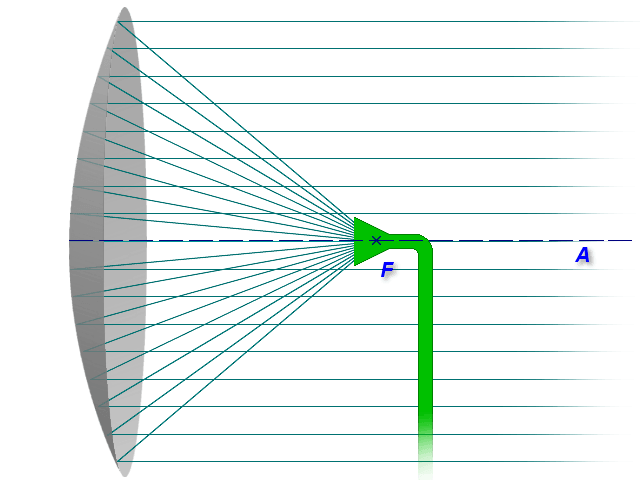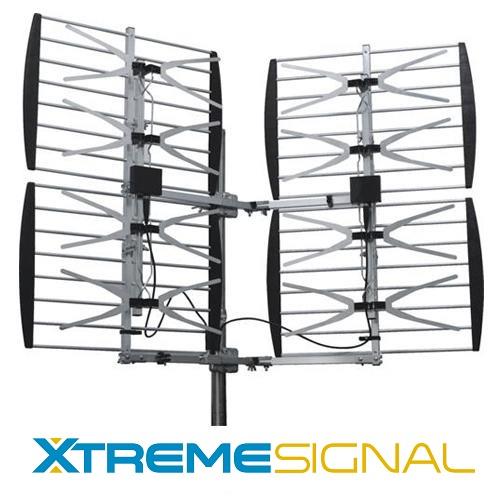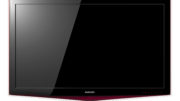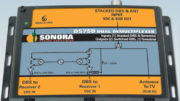It’s the round part of a satellite dish. But that’s not all. Reflectors are found on many different antennas, and while they look different, they all have much the same function. Reflectors are an essential part of almost all antennas, because they are inexpensive and they work.
About parabolic reflectors
The reflector on a dish is called a parabolic reflector. It acts like a lens, focusing as much of the satellite’s transmission as possible on a single spot. It’s designed specifically that way.
Parabolic reflectors are thousands of years old. They were used to start fires or just to focus light. The first time anyone used one for radio waves was back when Heinrich Hertz invented the first dish-shaped antenna in 1888. The principle works if you use light, radio waves, or even sound. Here’s an illustration of how parabolic reflectors work:

Whatever it is you want to focus comes in from the right side and bounces so that it all hits the point marked “F.”
Over-the-air antenna reflectors
There’s another type of reflector, though, and it looks really quite different from a dish’s parabolic reflector. Take a look at this image of one of our more popular antennas:

The X-shaped elements at front are actually the antenna’s working part, while the bars at the back are the reflector. (The black plastic at the edges is to hold the bars in place.) This doesn’t look to us like it would reflect, but it does the job very well. The goal here is to point the signal at the back end of the antenna’s working part, called the driven element. The reflector can have huge gaps because the television waves it’s reflecting back are so big that they can’t pass through those gaps. Having the gaps makes the antenna lighter and less expensive.
Antenna signals are much more powerful than satellite ones, so it’s not necessary to use a parabolic reflector. As everyone who looks in a mirror knows, a reflector can be perfectly straight and the reflector on the back of antenna does a great job of sending signals to the back of the antenna. (Because radio waves bounce a little differently than visible light, the reflector doesn’t have to be solid.) That way, both sides of the antenna element can be used, making it twice as powerful.
One big thing about reflectors, though…
The reflector on any antenna takes up a lot of space. In the case of satellite dishes, that space tends to be less than one meter (39″) in diameter to comply with OTARD rules. The bigger the reflector, the more of that transmission can be used — that’s why those big dishes at the Los Angeles Broadcast Center are so big. The transmission is focused on the LNB, which actually receives and processes the signal so that it is usable. Without a reflector, the LNB itself doesn’t get enough signal to actually do anything. That’s why you can’t just put the LNB on top of the TV and have it work.
By the way, if you need an antenna for your home, business, boat, or even vehicle, check out the great selection at SolidSignal.com. We’re not just about television, either. We can help you with base station antennas, industrial antennas, cellular antennas… the list goes on and on. Don’t know what you need? That’s why we have experts on staff during East Coast business hours. Call us at 888-233-7563 and you’ll get tons of free advice. Reading this after hours? Fill out the form below and we’ll get right back to you!





